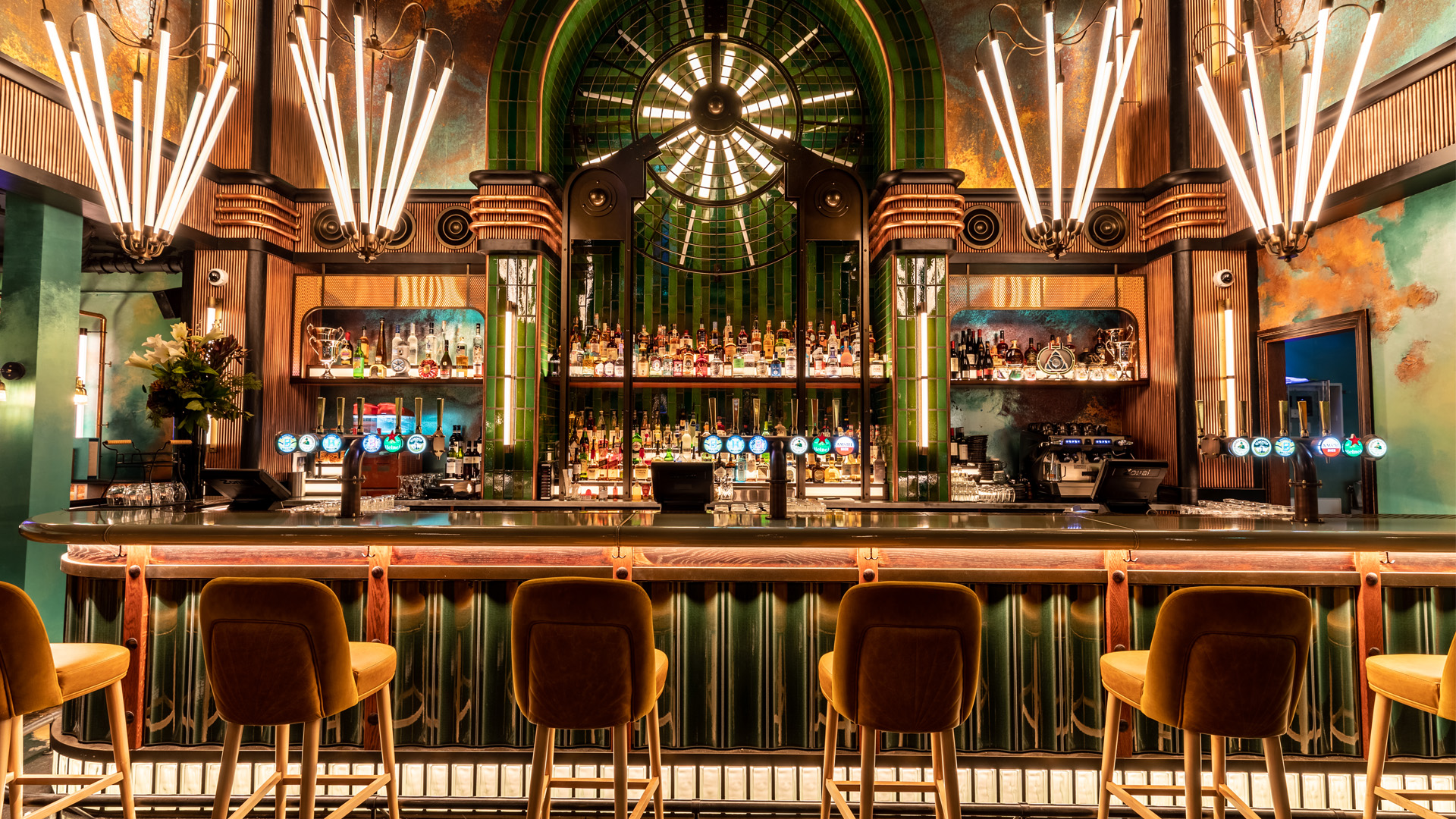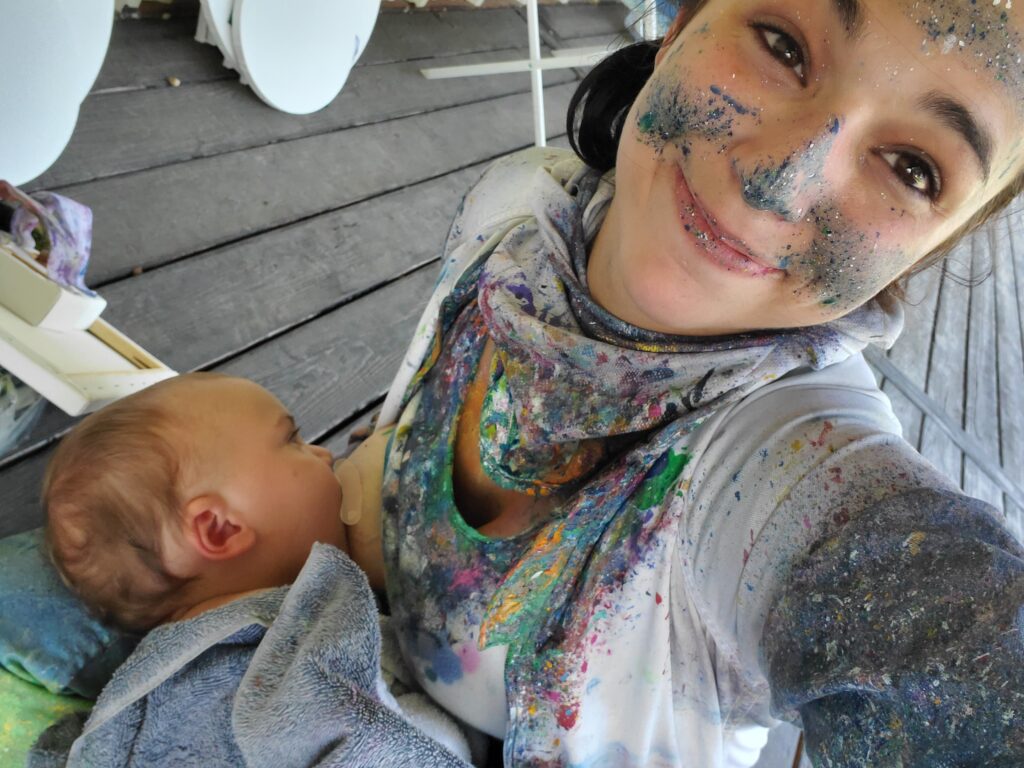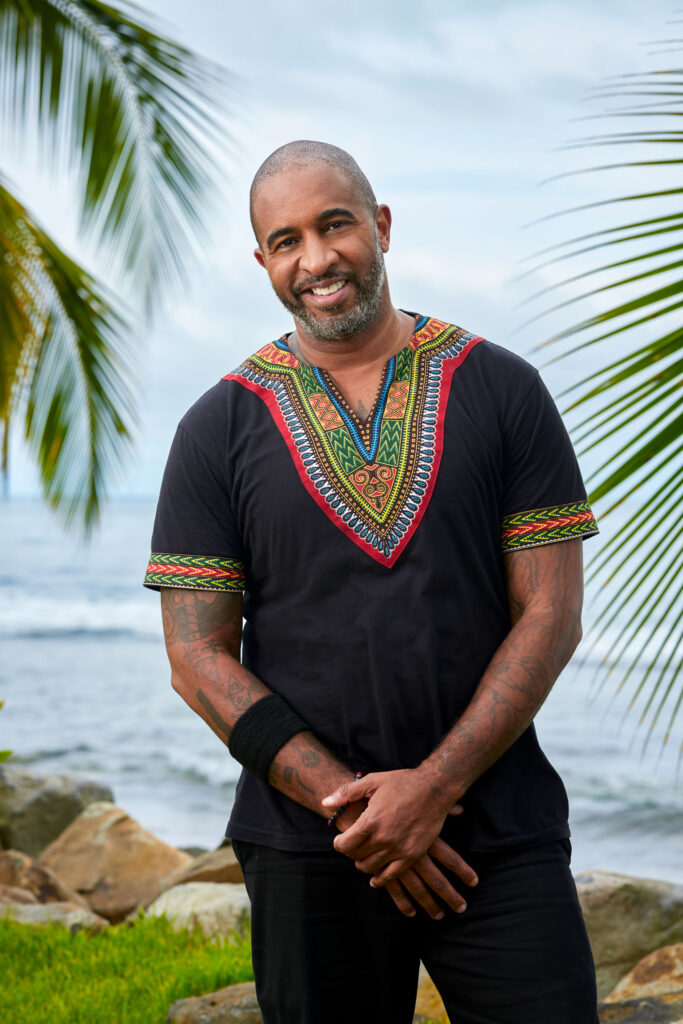
Electric Shuffle has reimagined shuffleboard by rescuing it from the back of bars, housing the redefined game all in a spectacular setting with delicious food and drink to create a delightfully immersive experience. With two bars and 17 shuffleboard tables, Electric Shuffle Deep Ellum is the first location in the U.S. for the London-based concept, promising a venue waiting to be discovered with award-winning design. To learn more please, visit www.electricshuffleusa.com and check out what they offer. I’m excited to sit down with Gene Ball, CEO of Electric Shuffle USA, to discuss what the business is providing to the local community.
What triggered the move from an investment banking background to the hospitality industry?
I’m from Long Island, New York, and I’m from a very Italian family. I think hospitality is a bit more in my blood and bones way back when. My grandparents owned a luncheonette in Brooklyn before I was born, so being around people who really cared about giving an audience great times with food and beverage, I naturally think that set me up for a future in hospitality. I went off to school and knew I wanted to be involved with the industry eventually, but I thought it would be a passion project kind of down the road after already doing a career in finance or consulting. But in college, I worked in a couple coffee shops and DJ’ed at our local bar in college on country nights with one of my best friends from school. Things like that, those natural forms of hospitality, is something I’ve always loved. Whether it’s a cup of coffee in the morning or a drink at night or playing the right song at the right time at the bar, I think all those things just lead up to what hospitality is to me. After school, I went into banking and did a summer internship there. I pivoted to consulting at McKinsey in New York and I realized corporate America in New York City was very far from hospitality.
How did the opportunity with Topgolf pop up?
I got the opportunity to move to Dallas and meet Craig Kessler, the COO of Topgolf and now a close friend, where he brought me down to work for him at Topgolf. This role was involved with emerging concepts for Topgolf and that was my indirect foray into hospitality. I absolutely loved it due to the mix of sports, entertainment, and strategy. It all came together right where I started to really learn and find a passion for it and jump into food and beverage menus, kitchen design, and other things I never thought I would be doing growing up. Knowing I love them, but never thought I’d be on the operator side of it. And there are a lot more people well more experienced than me. But through Topgolf, I met the team from London Red Engine who founded Electric Shuffle. Right before the pandemic, I headed over to London and met the team and we absolutely hit it off. They were looking for a US operating partner here in the United States. I think my experience at Topgolf and previously in banking consulting, allowed me to know enough about a lot of things, but not too much about anything. I was involved with emerging concepts to Topgolf from real estate design, construction, and other small bits. I worked with food and beverage menus, operations, marketing, and just had seen a lot of that spread across different functions to be a good choice to help run and launch the US business over here. It’s been an exciting journey, but that’s kind of my little story on getting into hospitality. I think we say we have sometimes the most stressful, but also the greatest jobs in the world because we had a great Saturday yesterday. It’s like we get to do this for a living where we give people moments of happiness.
Was there anything complicated about Topgolf that you didn’t originally expect when taking on that role?
I think going into Topgolf, what you start to realize is influencing and making changes at that scale is actually a very different position than I am at now. Not saying I had the position there, but it’s like when you have 40 or 50 locations, you’re joining a much bigger machine. I think that’s the one thing you underestimate, especially when you start to think about a national brand in scale and how much nuance is there. I think we had 20,000 associates or employees at Topgolf. How do you influence change and roll-out programs and projects and things like that? I think I underestimated it. I learned so much and met so many great people, but I think misunderstood the pure infrastructure of change. Coming from the consulting world, you kind of tell people what to do or give them your ideas, but they don’t have to listen to you. I think being on the inside of the company, which I loved, was different and very different from what I’m doing now. If we want to change something, it will happen tomorrow. But also taking a hundred steps back and realizing we’re not this large-scale venue with this infrastructure yet we can be more flexible. We also don’t have certain systems, processes, and things in place. It’s this double-edged sword right now of preparing for the future, but also taking a thousand steps back and realizing we’re still only one location here in the United States.
How close were you wanting to be to the authentic London experience or was shifting to local tastes a top priority?
I think overall, we’re not going for a pub experience. At the end of the day, good hospitality is good hospitality. If you look at our design and everything, we know there are influences of London design and culture. But we’ve always taken the mindset of building beautiful places with amazing games and an amazing menu. Regardless of where in the world you are, we will always come through. We don’t necessarily take the approach of “we need to make this look more like London.” When we’re focusing on designs, we notice the amazing hundred-year-old building in Deep Ellum with the backstory of this woman named Tessa. Tessa was a female scientist from the 1950s, who’s looking towards the future where science is industrial and cold, but she’s beautiful and has art. Mixing the dichotomy of science and art, something that’s traditionally been very cold and making it beautiful, is our backstory or filter. And then we have this a hundred-year-old brick building we’ve renovated and rejuvenated in Deep Ellum. How do we bring Tessa into that space? If you go into Deep Ellum, it looks very different than our two London locations. It’ll look very different for Austin, where we’re going next. We really take the neighborhood and everything in that one spot into consideration, not copying and pasting a style.
When you can pop in for a drink and hang out, it can have that London feel, but we’re just thinking that should be done in hospitality in general. And then there are some fundamental changes I would say from a service standpoint and a menu standpoint. I always use the example that they love Gin, but the Americans like tequilas and whiskeys way more. We did a lot of work on the actual underlying menu, because we know American taste and preferences are different at a certain level. That is where we know we did have to change and pivot and shift a bit. We are putting TVs in our venues to watch sports, which also has a unique culture. They have soccer games, tennis, and cricket. They don’t proactively watch sports on a Saturday or Sunday during the falls with football going on as we do. But I think at the end of the day, we’re really focused on building beautiful spaces and doing that as best we know how. Not thinking about America versus London or things like that, just kind of what does good look like and what can we have fun doing.
Was the pandemic a major talking point when this bar was implemented and were there any safeguards in place?
We started looking at locations around June 2020 and I remember walking down Elm Street in Deep Ellum. There was not a car in the street, and it made us think about the opening day. I will always love Deep Ellum ever since I moved here, it just has a certain soul and character to it, and I thought we could do something awesome in the neighborhood. The pandemic hit and we’re kind of standing there on the street and looking at a beautiful building that’s empty. Are we going to bet on the future that this neighborhood will bounce back and can we be a part of that? I think COVID was always a thought, but we also believe long term and if we can navigate through it. People are always going to want human experiences with one another and to enjoy the hospitality. Our underlying belief, I think we’ve seen this with amid the pandemic still, people really miss being around each other. I think enjoying each other’s company and we always had the underlying belief that people will want to come back to this in some shape or form. Our shuffle tables are so massive and they’re basically semi-private spaces. We knew even with restrictions and spacing, if we do go back down that route again, we have a venue that helps cater to it. Our business and underlying economic model are not modeled to having capacity limits and stuff, but when we think about a long-term viability of the business, we believe people will always want to go out. They’ll want to enjoy new experiences and that was the business case.
Can you expand on your collaboration with the Birthday Party Project?
This is something that we’re creating in the infant stages and with everything going on, just trying to find a way to give back slightly early on that we don’t do after the fact. Partnering with the Birthday Party Project for us is a way to structurally embed charitable giving within what we’re doing. We’re not trying to necessarily change the world by curing cancer or diseases, but we’re giving people happiness for a night out. I think that matters even more in a pandemic like this. Whether it’s your first holiday back with friends and family or a night out when you haven’t seen in a while, that’s important in life. I think what the Birthday Party Project does is give that to children in need. What they do is basically for $50, they will give a child in need a birthday party and throw a celebration for them. How can we give back and choose a charity that resonates with what we’re trying to do? The Birthday Party Project stuck out as an organization that we could align a bit with that allows us to give back structurally. If someone is coming in for a birthday at our place, they can buy a bottle of champagne with a little sparkler to celebrate, but they’re also doing something nice and helping contribute back towards. Every time you buy one, 10% of the sales go towards the Birthday Party Project. Our idea is after we sell 10 of those sparkler packages to a group of guests, that’s one more birthday party we can give to someone in need. It’s something fun that’s very on-brand for us, in the sense of we’re giving something that we truly believe in. We could have partnered with a lot of different organizations and they’re all great out there, but it’s something that represents what we’re trying to do daily, which is giving people amazing celebrations and experiences. And the Birthday Party Project does that for children. It felt like a nice little collaboration that really fits in what we’re trying to do and what we represent daily of bringing a bit more happiness into the world.
What has caused the shift in entertainment within the drinking scene and do you think Shuffle Boards has a notable place in that landscape?
I think there are two parts to it. I think you’re noticing the macro trend called E-tertainment. I think there’s this macro trend which acts as a new way to have gamified experiences on top of food and beverage. Dave & Buster’s was huge for the early 2000s, but then Topgolf took us into the next generation. I think there’s so much demand for these types of experiences. If we believe we’re putting a different product aside, I think that’s where we have the leg up. We use technology in our game that’s all proprietary. The London team had spent years testing focus groups and researching the gameplay. It’s not like we just threw 50 shuffleboard tables in a bar and called it a day. 16 people can play our games, we’re constantly developing new games, and we’ve user-tested that guest experience to make sure people love coming. My office sits above one of the rooms and you can just hear yells constantly. Some people would find that annoying, we see it as a barometer of success., I think we saw a way to revamp a traditional bar game that usually sits in the back of the dive ball. I think we’ve found a really nice way to really change that and really celebrate the game.
I love traditional shuffleboard, but I think ours is different. We’ve changed the height of it and we put technology on top of it to make the game a bit more fun and more approachable. I think from your more micro question of why shuffleboard, I think it’s just a fun game and there’s something about the anticipation of puck sliding that is approachable for people. People can have fun with it, but I’ve never seen it really spin like this. I think that gives us a bit of a leg out versus ax throwing. It’s like you’re axing down 10 different places, some places do it a bit better than others, but I wouldn’t say anybody’s really cracked the ax-throwing space yet and offering something different. Whereas we hope we can offer something a bit different that I’m sure people will try to replicate us down the road, but for the time being do something a bit different and special.

